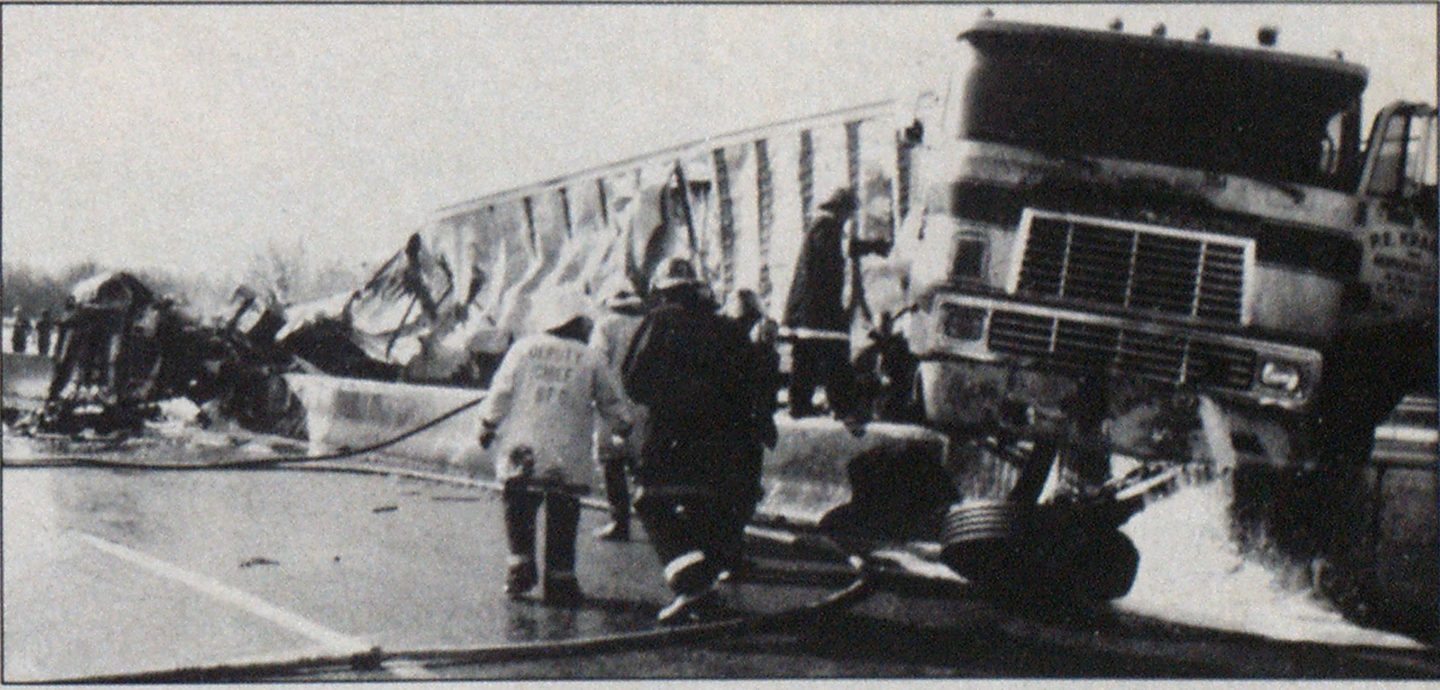
FOAM
HAZARDOUS MATERIALS
A New Jersey foam task force, formed in November 1981 by mutual-aid departments, cuts across county lines to meet any incident requiring a foam unit.
Five fire companies in Camden County, N.J., formed a special foam task force to combat chemical fires in the county’s 227-square-mile area, which houses over 10,000 factories, commercial businesses, railways, airports, highways, a 14.3-mile waterfront and 500,000 residents.
The task force is made up of four chemical units equipped with four class A pumpers retrofitted with 100 to 300-gallon foam tanks and preconnected foam lines. By pooling their resources, the task force’s biggest expense was the purchase of foam tanks, which averaged about $300.
The task force’s services are available to all Camden County towns as well as to towns in Burlington and Gloucester Counties through mutual-aid agreements. The Gloucester County Fire Department has two foam units, and Burlington County Fire Department has one.
In addition to these seven chemical units, there are two support companies, enabling the foam task force to respond to a full three-alarm assignment.
There are four stages to the force’s standard operating procedures: The first alarm, or a tactical box response, calls in three foam units, a field communications unit and two coordinators (Chief Harry Koff and Chief Michael Schaffer), who consult with the district fire chief and are responsible for coordinating the foam operation. This response moves approximately 700 gallons of 3 percent protein foam with application rates as high as 2200 gpm.
A full box alarm adds an additional foam unit by calling in two support companies with up to 4000 gallons of 3 percent protein foam. This brings another 600 gpm of foam flow.
A second alarm calls in two stations from Gloucester County, with an additional flow of 1800 gpm and 500 gallons of foam.
A third alarm calls in the Burlington County station with an additional flow of 1250 gpm and 200 gallons of foam.
For waterway emergencies, the task force has access to a 41-foot Coast Guard patrol boat capable of pumping 500 gpm.
Camden County has set up foam banks in three strategic locations for fast dispatch to a foam assignment. One of the foam banks, located in a warehouse in the county’s industrial section, contains 2000 gallons of foam concentrate. The other two banks each have 200 gallons of foam, but there are plans to raise these amounts to 500 gallons.
The foam bank works like an insurance policy. If a fire company is a member of the foam bank and it needs foam, all that is in the bank is at the company’s disposal. The foam bank is restocked by cans of foam donated from participating companies.

Approximately 45 fire companies, or 50 percent of Camden County’s fire stations, belong to the foam bank. Each fire company is presently donating two 5-gallon cans of foam to the bank.
If a fire company is not a member of the foam bank and requests the services of the foam task force, it is the company’s responsibility to pay back the concentrate used at the incident.
Camden County is encouraging private industries also to join the foam bank. In addition, the task force is in the process of requesting the county freeholders to set up a $20,000 buffer fund for the sole purpose of purchasing foam for the bank.
Gloucester and Burlington Counties are setting up foam banks in their towns as well.
New Jersey state legislators are working on a right-to-know bill that will give fire fighters and the public the right to know what chemicals are stored in warehouses and refirieries. Fire officials have met with legislators to discuss adding to this bill a reimbursement clause guaranteeing that foam used at incidents will be paid back to the foam bank and that the fire department will be reimbursed for any equipment and apparatus damaged or destroyed at an incident.
Camden County’s foam task force, which is made up of about 200 fire fighters, holds monthly meetings for training and for reviewing and preplanning incidents. Drills are held every other month, and members attend a 24-hour hazardous materials course sponsored by Pennsylvania State Fire College.
Camden County’s task force is made up of the Ashland Fire Company No. 2, Lindenwold Fire Company No. 1, Bellmawr Park Fire Company, Delaware Gardens Fire Company, and Audubon Park Fire Company.
Gloucester County’s task force consists of the Almonesson Lake and Colonial Manor Fire Companies. The Burlington County task force is the Kettle Run Fire Company.


